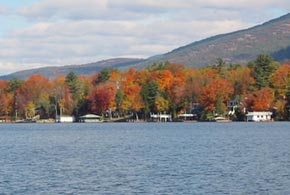Over a few short years, the Internet of things has morphed from a fascinating concept into reality. It is rapidly redefining a wide array of industries and delivering greater insights into science and research.
At New York’s Lake George, a 32-mile-long lake located in the Adirondack Mountains, more than 60 researchers are now turning to sensors and connected systems to better understand environmental threats—including road salt, agricultural contaminants, invasive species and the growth of algae—so that they can better protect the lake and its water.
The initiative, dubbed the Jefferson Project, was launched in 2014. It is a joint collaboration effort involving Rensselaer Polytechnic Institute, IBM Research and the FUND for Lake George.
“It is an unprecedented project with an ambitious technological initiative designed to understand human impacts on fresh water,” notes project director Rick Relyea. “Although we are attempting to better protect water at Lake George, the project is a blueprint for managing water supplies around the world.”
Using sensors and other high-end technology to automate monitoring, researchers are attempting to gain insight into how the lake is changing, he explains. The team hopes to build predictive models that allow scientists to analyze different scenarios for improving environmental management and controls.
“By understanding how the lake actually functions, along with how humans impact it, we can begin to address threats and problems in a far more informed way,” Relyea points out.
Generating Three-Dimensional Data
The research team has deployed sensors that measure oxygen, temperature, and the amount of algae, nutrients and other substances in the lake, as well as in tributary streams. One set of sensors move up and down within water columns in the lake for about eight months of the year (as long as Lake George is ice-free)—up to 195 feet deep—in order to generate three-dimensional data.
The system relies on Acoustic Doppler Current Profilers (ADCPs) to bounce sound waves back from floating particles in the water. It uses a cellular network to transmit all the data back to servers.
In fact, the sensors are interconnected, and some of them are smart devices that can detect changes in the weather or lake environment and adapt accordingly. “If a sensor detects something unusual, such as an algae bloom, it can communicate with the other sensors, and the system can make decisions about whether to increase or change the way it samples data,” Relyea explains.
However, because cellular coverage within certain areas is weak or non-existent, the team is also looking into using satellite technology.
At present, the research team has deployed 16 sensors across Lake George. Relyea says that the goal is to reach 40 or 50 sensors within the next year or so.
Researchers are currently debugging systems, checking and validating performance, and working to build the models and simulations. The end goal is to commercialize the technology and use it as a foundation for an array of environmental systems.
“This technology is not specific to water,” Relyea points out. “You could do the same thing in the air or in terrestrial environments. This technology could be modified to provide benefits and solve environmental challenges all over the world.”









